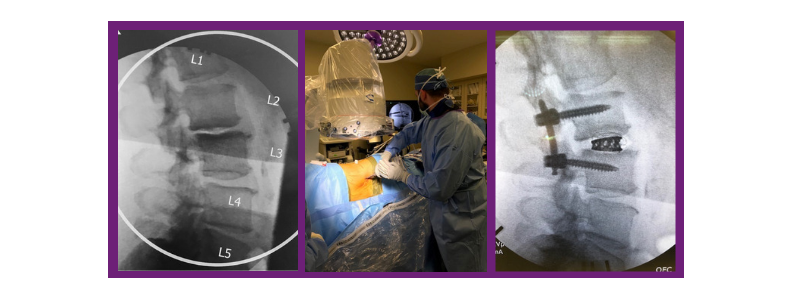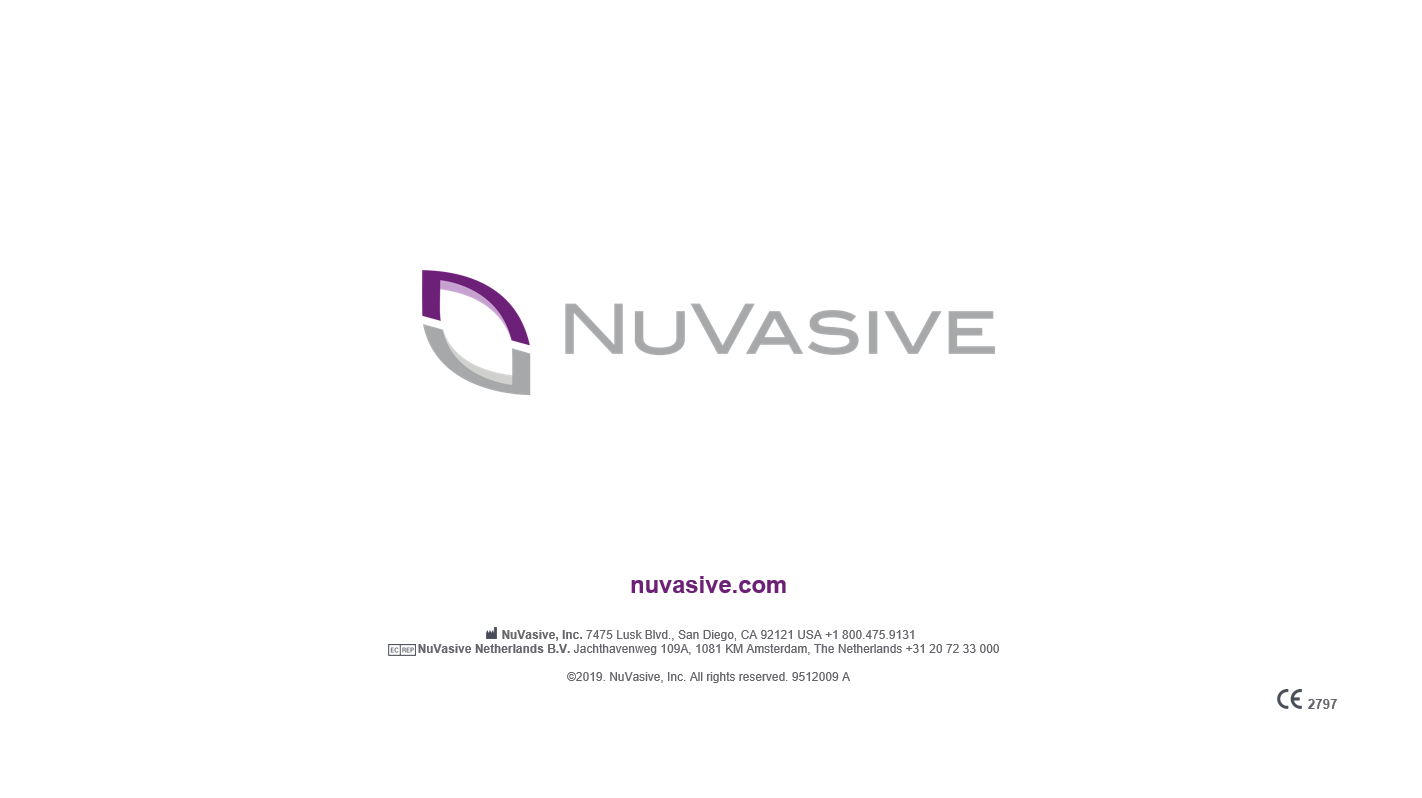![]()
In our Featured Case series, NuVasive showcases innovative cases and how our technologies are integrated to create a cohesive system to address key patient pathologies. Our mission at NuVasive is to transform surgery, advance care, and change lives and we are constantly focused on how to deliver improved patient outcomes, increase OR safety and efficiency, and extend our technology to future applications.
In this Featured Case, we present a 64-year-old male with L2-L3 DDD, retrolisthesis and severe right foraminal stenosis resulting in back pain and right thigh radiculopathy not responsive to extensive nonsurgical care. The patient connected with Dr. Robert Norton of Florida Spine Associates in Boca Raton, Florida, who routinely performs outpatient minimally invasive spine surgery. Based on the patient’s diagnosis, Dr. Norton performed an L2-L3 XLIF utilizing the X360 system. Guided by NVM5 and LessRay, he implanted Modulus XLIF with Osteocel Pro and XFixation with Reline MAS Reduction pedicle screws, providing segmental stabilization and indirect decompression.

“NuVasive’s X360 system allowed me to plan and execute this case without repositioning the patient. I can accomplish all of my surgical goals in a single, lateral position. There are countless benefits to the patient, myself, and even the surgical facility.”, says Dr. Norton.
Through the use of the X360 system, Dr. Norton was able to implant a 22mm Modulus XLIF cage and unilateral screws all from the lateral decubitus position, reducing operative time, tissue trauma, blood loss, radiation exposure and anesthesia exposure time.
Additionally, LessRay played an integral role in reducing fluoroscopic radiation while providing surgical efficiency through image stitching, angle finding, and tracking. A lateral stitch image was taken from sacrum to L1 to prove the appropriate operative level at L2-L3. This lateral stitch was then used at the baseline for lowering the radiation to low dose and pulse mode to 1 pps. Additionally, both the X-ray tech and Dr. Norton noted that tracking cut down on unnecessary images that would have been taken without LessRay. At the end of the case, the X-ray tech pointed out to Dr. Norton that during his XLIF cases without LessRay, the mGym2 per image taken was roughly 4 per image taken. The mGym2 for our LessRay case with the C-arm settings on low dose and 1pps was 0.004 per image taken. This represents a 1000% reduction in radiation exposure per image taken.
“Radiation exposure is a necessary evil when performing MIS spine surgery. With LessRay I am able to reduce radiation exposure by an average of 75%1 without degrading the image quality. In addition, LessRay now offers the possibility of intraoperative alignment assessment, simplified localization imaging, and improved visualization. LessRay minimizes radiation exposing OR steps1 while maximizing OR efficiency. This is incredible technology that puts my mind at ease and gives me a sense of security.”
The case was completed in 60 minutes and the patient was able to go home three hours post-op. At the latest (three-month) follow-up visit, the patient reported feeling great and eager to return to golfing. He was amazed at how well he was doing and couldn’t believe that his preoperative thigh pain was completely gone as soon as he woke up from surgery.
- Wang TY, Farber SH, Perkins SS, et. al. Internally randomized control trial of radiation exposure using ultra-low radiation imaging versus traditional C-arm fluoroscopy for patients undergoing single-level minimally invasive transforaminal lumbar interbody fusion. Spine 2017;42(4);217-23.
Note: Osteocel Pro and LessRay are not available for sale to the EU market.
Click here to read more case features.
